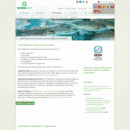Markets for Live Fish & Shellfish Transport
An important advantage aquaculture has over capture fisheries is the ability to have more control over the harvest process. An advantage of this is the possibility of marketing live fish. Live fish are not associated with spoilage or quality deterioration and if the fish are kept alive, there is no food loss or waste. Live fish also tend to command high prices and the fact the fish are live is seen as a form of value addition.
The live seafood distribution system is highly sophisticated and complex. The mode of shipment depends on distance, shipping technology, and the length of time live and fresh seafood product has to be out of the water. Products must be moved as quickly as possible to their final destination. For live seafood, in-transit mortality is the major concern. A product that is dead or moribund on arrival is virtually worthless. For fresh seafood any loss of quality is another concern. Transportation can be by air, land, and water or a combination of these.
Markets in Practice: Egypt and Tilapia
Markets in Practice: Egypt and Tilapia
Egypt is one of the largest producers of tilapia and has seen a significant growth in the live tilapia trade. A 2012 market study suggested support to the sellers of live tilapia is a priority because of the value-added this generates and the quality of the resulting product. Helping to endorse live fish marketing is another food loss and waste (FLW) control strategy.
Markets in Practice: Southeast Asia and Live Fish
Markets in Practice: Southeast Asia and Live Fish
The market for live fish is longstanding in Southeast Asia and began in the mid 1970s. The demand for LRFF is concentrated in Hong Kong and China with more than 20 countries in Southeast Asia and the Pacific supplying fish to this market. Live reef food fish are a high value commodity in the under-developed and historically low-income regions from where many of these fish are sourced. Value-adding fisheries such as these can offer much needed income opportunities for the fishing communities in these regions. The adoption of new transportation and production technologies, specifically the supplanting of traditional sea with air transport, is seen as a potential way to lessen ecological impact, lower transport costs and lower mortality during distribution.
Key Publications
The Market for Egyptian Farmed Fish This report represents the output of a two-week study to better understand the market for Egyptian farmed fish. The intention was to provide an output which would cut-across all five of the project outcomes. | |
Synopsis of the Hong Kong Seafood Market Provides key information on popular seafood items and product forms including live fish and shellfish, sales and restaurant venues, as well as Hong Kong consumer habits and trends. | |
Market Chain Analysis for the Trade in Live Reef Food Fish This paper is part of a larger project that aims to analyse economic and market impacts of the live reef food fish (LRFF) trade in Asia-Pacific. |
More Resources
More Resources
31 October 2023
01 January 2018














